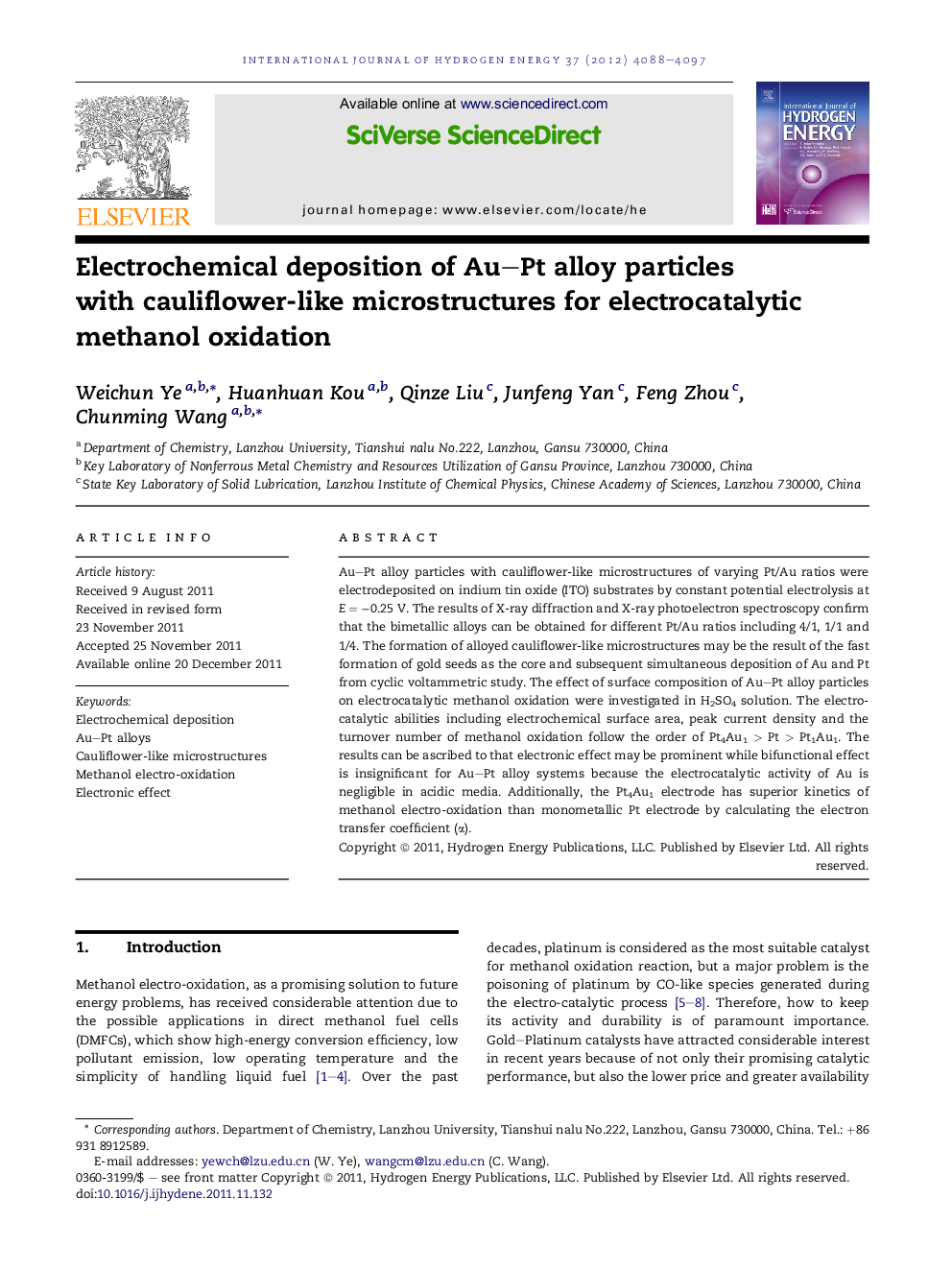| Article ID | Journal | Published Year | Pages | File Type |
|---|---|---|---|---|
| 1275462 | International Journal of Hydrogen Energy | 2012 | 10 Pages |
Au–Pt alloy particles with cauliflower-like microstructures of varying Pt/Au ratios were electrodeposited on indium tin oxide (ITO) substrates by constant potential electrolysis at E = −0.25 V. The results of X-ray diffraction and X-ray photoelectron spectroscopy confirm that the bimetallic alloys can be obtained for different Pt/Au ratios including 4/1, 1/1 and 1/4. The formation of alloyed cauliflower-like microstructures may be the result of the fast formation of gold seeds as the core and subsequent simultaneous deposition of Au and Pt from cyclic voltammetric study. The effect of surface composition of Au–Pt alloy particles on electrocatalytic methanol oxidation were investigated in H2SO4 solution. The electrocatalytic abilities including electrochemical surface area, peak current density and the turnover number of methanol oxidation follow the order of Pt4Au1 > Pt > Pt1Au1. The results can be ascribed to that electronic effect may be prominent while bifunctional effect is insignificant for Au–Pt alloy systems because the electrocatalytic activity of Au is negligible in acidic media. Additionally, the Pt4Au1 electrode has superior kinetics of methanol electro-oxidation than monometallic Pt electrode by calculating the electron transfer coefficient (α).
Graphical abstractFigure optionsDownload full-size imageDownload as PowerPoint slideHighlights► Au–Pt cauliflower-like alloys of varying Pt/Au ratios have been electrodeposited. ► The electrocatalytic efficiency follows the order of Pt4Au1 > Pt > Pt1Au1. ► Alloyed Pt with Au promotes the catalytic activity mainly through electronic effect. ► Pt4Au1 has enhanced kinetics of methanol electro-oxidation than monometallic Pt.
